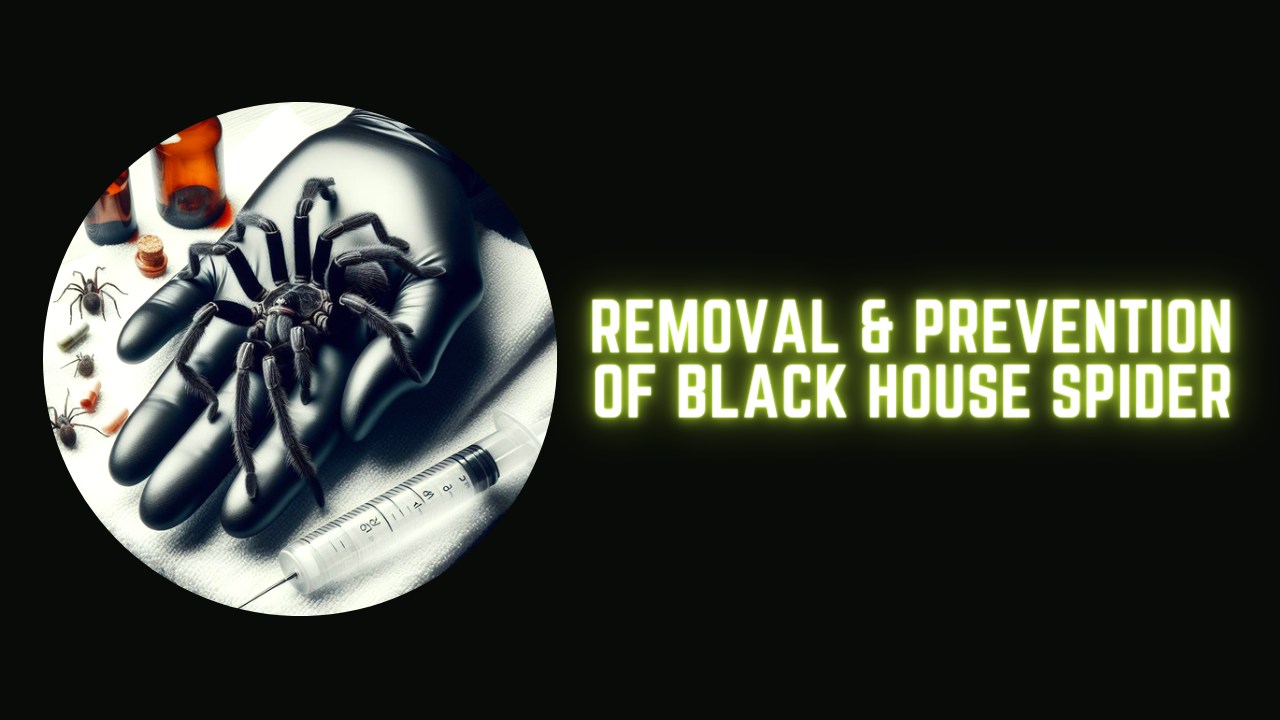
28, Dec 2023
Black House Spider Bite Symptoms and Treatment
Black house spiders provide an odd problem because they frequently lurk in the calm places of our houses and gardens. Although they are not usually aggressive, their bites may result in more significant health issues in addition to pain. We look into the world of black house spiders in this extensive guide. We will discuss common symptoms from their bites, necessary first aid protocols, when to seek medical attention, and practical ways to avoid coming into contact with these eight-legged residents. Our goal is to provide you with information and self-assurance so that you may overcome fear and uncertainty with knowledge and readiness.
Identifying Black House Spider Bites
The initial intense pain, regional swelling, and, in rare instances, milder symptoms like headaches or nausea are indicators of a black house spider bite. In contrast to more threatening species, their bites often do little damage and recover without significant issues. It’s imperative to keep an eye out for any bite for indications of an infection or allergic reaction, nevertheless. Understanding and accurately recognizing these bites is essential to allay fears and encourage cohabitation with these frequently misunderstood spiders, as encounters with them in urban areas have grown.
Detailed Symptoms of Black House Spider Bites
The variety of symptoms brought on by bites from black house spiders is examined in detail in this section. We will address the entire range of potential symptoms, from early indications like redness and swelling to less common, more severe reactions.
Redness and Swelling: One of the most common reactions to a spider bite is redness and swelling in the bite region.
Pain or Itching: At the bite site, people frequently describe experiencing acute pain or itching.
Localized Reaction: The response to a Black House Spider bite is typically restricted to the site of the bite, in contrast to some more harmful bites.
Minor Skin Reactions: Some people may get a little rash or elevated spot on their skin in the vicinity of the bite.
Immediate First Aid Measures
Discover essential first aid steps to mitigate the effects of a black house spider bite. Practical advice on managing pain, reducing swelling, and preventing infection will be provided in a clear, easy-to-follow format.
Clean the Bite: To lower the chance of infection, wash the affected area with soap and water.
Cold Compress: To reduce swelling and ease discomfort, apply a cold pack or a cloth moistened with cold water.
Elevation: To lessen swelling, raise the affected limb if the bite is on an arm or leg.
Avoid Scratching: To reduce further swelling and the chance of infection, try not to scratch the bite area.
Over-the-counter Medication: Acetaminophen and ibuprofen are two examples of over-the-counter pain relievers that can be used for pain relief.
When to Seek Medical Attention
Understanding when a spider bite requires professional medical attention is crucial. This part will guide you through recognizing signs of severe reactions and the importance of timely medical consultation.
Severe Pain: In cases where the bite’s discomfort is exceptionally intense or does not go away when taking over-the-counter medication.
Signs of Infection: Increased redness, swelling, discharge, or warmth near the bite, as well as the development of a fever, are indicators of infection.
Allergic Reaction: Signs such as trouble breathing, swelling in the throat, lips, or eyelids, or a rash that looks like hives could be an allergic reaction.
No change: When there is no discernible change in the symptoms over a few days, they continue or get worse.
Underlying disorders: After a bite, people with compromised immune systems or certain medical disorders should see a doctor.
Effective Prevention Strategies
Preventing bites is key. We’ll share expert advice on how to deter black house spiders from your living spaces and protect yourself from potential bites.
Regular Cleaning: To lessen spider hiding places, keep your home tidy and clutter-free.
Seal Entry Points: Inspect and caulk any fissures or gaps in doors, windows, and walls.
Take Down Webs: Whenever you see spider webs in your home, take them down.
Use of Insect Repellents: In locations where spiders are regularly observed, take into consideration applying chemical or natural repellents.
Maintain Outdoor Spaces: To deter spiders from building their nests close to your house, keep gardens and outdoor spaces well-kept.
Storage Caution: Exercise caution while opening boxes or products that have been stored for an extended period.
Wear Protective Clothing: As a precaution, wear gloves and long sleeves in locations where there is a high spider activity.
Professional Pest Control: If you have a persistent spider problem, consult a professional pest control service.
Understanding Black House Spiders
Gain insights into the behavior and ecology of black house spiders. This knowledge not only helps in prevention but also in fostering a healthier coexistence with these creatures.
Conclusion:
Summarizing our guide, we emphasize the power of knowledge in dealing with black house spider bites. By staying informed, you can confidently manage and prevent these common encounters.
- 0
- By Faizan Khan






